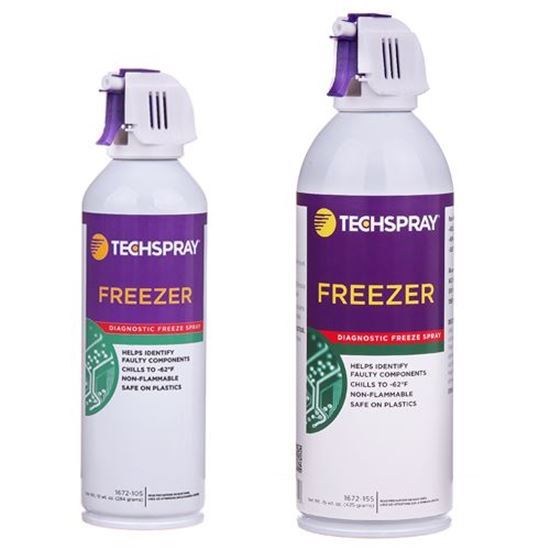
자주 묻는 질문
고장 격리를 위해 의심되는 PC 기판을 가압합니다. 기판에 분사하여 고장이 발생하는 부위를 확인합니다. 연장 튜브를 부착하고 결함이 있는 구성품이 격리될 때까지 개별 구성품에 분사합니다.
주마다 다를 수 있으므로 현지 규정에 대해 해당 주 환경 기관에 문의하기 바랍니다. EPA 유해 폐기물 규정 40CFR에 따른 일반 가이드라인이 있습니다. 캔이 비워질 때까지 공기 압력을 뺍니다. 더 이상 가압되지 않을 때까지 캔 내용물을 비웁니다. 이렇게 하면 캔 밖으로 최대한 내용물이 나가게 됩니다. 이 상태를 "RCRA-빈 상태"로 간주합니다. 이때 다른 폐기물 금속 용기 일반적으로 재활용 규정에 따른 금속 폐기물로서 처리할 수 있습니다. 이 시점에서 캔을 고체 폐기물로 (반드시 위험한 폐기물이 아닌) 간주한다는 것을 유념하시기 바랍니다.
더스터, 동결 스프레이, 플럭스 제거제에 일반적인 에어로졸 트리거 분사기는 사용하지 않을 때 스트로를 저장하는 2가지 방식이 있습니다. 분사기 본체 뒤에 있는 구멍은 스트로를 집어 넣을 수 있는 크기입니다. 트리거 아래의 슬롯 또한 스트로를 제자리에 넣을 수 있는 사이즈로 트리거를 잠금 고정할 수도 있습니다.
제품 유통기한은 제품 페이지에 있는 기술 데이터 시트(TDS) 또는 적합성 증명서(COC)롤 살펴 보시면 알아볼 수 있습니다. https://www.techspray.com/coc로 이동하여 COC를 다운로드할 수 있습니다. 유통기한을 확인했으면 사용기한의 제조 날짜에 추가해야 합니다. 제조 날짜는 배치 번호로 식별할 수 있습니다. 대부분의 자사 제품의 배치 코드는 Julian Date 형식의 제조 날짜입니다. 이 형식은 YYDDD이며, YY = 연도, DDD = 날짜입니다. 예를 들어, 19200은 2019년 200일 또는 2019년 7월 19일입니다. 배치 번호에 대한 이해를 돕기 위해 이 웹페이지에 설명하고 차트를 제공하였습니다 : https://www.techspray.com/batch-codes.



